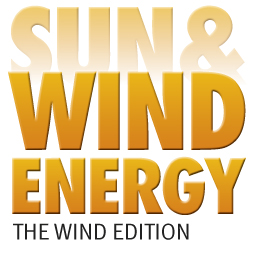Proceedings: all participants have been given the link to the page from which they can download all presentations. Proceedings are also available free of charge to all EWEA members via the EWEA Members’ Area. For non-EWEA members, proceedings can be ordered on this page.
Programme outline
| Tuesday 2 June 2015 |
||
| 08:00-09:00 | Registration and welcome refreshments in the exhibition and poster area | |
| 09:00-09:05 | Welcome and opening remarks | |
| 09:05-11:00 | Session 1 – Mesoscale modelling |
|
| 11:00-11:45 | Refreshments break in the exhibition and poster area – Poster session | |
| 11:45-13:30 | Session 2 – Site suitability: what do we do next? |
|
| 13:30-15:00 | Lunch in the exhibition and poster area | |
| 15:00-17:00 | Session 3 – Measurements |
|
| 17:00-18:30 | Drinks reception in the exhibition and poster area – Poster session | |
| 19:30-23:00 | Workshop dinner reception at Helsinki City Hall for all participants, followed by drinks | |
| Wednesday 3 June 2015 | ||
| 08:00-09:00 | Welcome refreshments | |
| 09:00-11:00 | Session 4 – Stepping over the line: Turbine output in real conditions |
|
| 11:00-11:45 | Refreshments break in the exhibition and poster area | |
| 11:45-13:30 | Session 5 – Wakes: where are we now? |
|
| 13:30-15:00 | Lunch in the exhibition and poster area |
|
Detailed programme
Tuesday 2 June 2015 – 09:10 – 11:00
Session 1: Mesoscale modelling
Session chair: Hans Ejsing Jørgensen, head of section, DTU Wind
Session description: In this session several aspects regarding the use of mesoscale models in wind resource assessment will be presented such as:
- How can we utilize the large scale reanalysis data to come up with a better estimate of the global and regional wind ressources (The global windatlas)?
- Efficient ways of calculation the wind resources through the use of mesoscale data
- What is the variation of the output of different mesoscale models given their different setup and input?
- Can mesoscale models be used for micro siting?
The session will be followed by a more general discussion about the use of mesoscale models within wind resource assessment and siting.
Speakers:
| The new worldwide microscale wind resource assessment data on IRENA’s Global Atlas | Jake Badger Senior researcher DTU (confirmed) |
| Computationally Efficient Dynamical Downscaling with an Analog Ensemble: Application to Wind Resource Assessment | Daran Rife Global Head of Mesoscale Modeling DNV GL (confirmed) |
| Can Mesoscale models reach the Microscale? | Gil Lizcano R&D Director Vortex (confirmed) |
| Presentation of the Mesoscale modelling benchmarking exercise (30′) |
Andrea Hahmann Senior Scientist DTU (confirmed) |
| followed by discussion Discussant:Clive Wilson Manager Mesoscale Model Development MET Office |
|
Tuesday 2 June 2015 – 11:45 – 13:30
Session 2: Site suitability: what do we do next?
Session chair: Lars Landberg, Director, Strategic Research & Innovation, Renewables, DNV GL
Session description: This session will address the current state within the field of site suitability. In particular it will address:
- The estimation of mean winds, extreme winds and turbulence intensities;
- The use of statistical methods;
- The connection between uncertainties and loads;
- The economic optimisation of operating assets.
Speakers:
| Climate forecasts for site selection: a new generation of risk management tools | Albert Soret is Senior Researcher, Co-leader of the services group BSC-CNS (confirmed) |
| Extreme Winds in the Suitability Context | Matthew Hendrickson Global Manager of Assessment Vaisala (confirmed) |
| How reliable is the Peak-over-threshold extreme wind assessment method? | Ole Steen Rathmann Senior Researcher DTU (confirmed) |
| Uncertainty in wind climate parameters and the consequence for fatigue load assessment |
Henrik Stensgaard Toft Associate Professor Aalborg University, Denmark (confirmed) |
| Discussion | |
Tuesday 2 June 2015 – 15:00-17:00
Session 3: Measurements
Session chair: Tomas Blodau, Head of Department Wind and Site, Senvion
Session description: The focus of this session is on reduction of uncertainty and cost of both onshore and offshore wind measurements. From optimising onshore deployment locations to a comparison of floating solutions, LiDAR measurement is given special attention.
Speakers:
| Cup Anemometers: calibration, uncertainty, and bias | Taylor Geer Global Head of Practice, Energy and Development Services DNV GL (confirmed) |
| Uncertainty in power performance measurement using LiDARs (working title) |
Mike Courtney Senior Researcher DTU (confirmed) |
| Foresighted planning of LiDAR measurement campaigns by using error maps | Doron Callies Researcher Fraunhofer IWES (confirmed) |
| Cost effective Offshore Wind Measurement campaigns using Scanning LiDAR: 2 Offshore Campaigns in France |
Emma Coutts Scientist Oldbaum Services (confirmed) |
| Floating LiDAR as a cost-effective and reliable alternative | Michiel Müller Unit Manager Wind Energy Ecofys (confirmed) |
| Discussion | |
Wednesday 3 June 2015 – 09:10-11:00
Session 4: Stepping over the line: Turbine output in real conditions
Session chair: Oisin Brady, Director, Gaoithe Renewable Energy
Co-chair: Peter Stuart, Senior Technical Manager, RES
Session description: This session explores two areas where further detail can be brought to bear in energy yield assessments:
- Turbine performance and how this varies as a function of several factors, not just wind speed
- Energy yield assessment on a time-dependent basis – is there a gain in precision to be had?
Speakers:
| A novel and universally applicable turbine performance prediction method | Neil Atkinson Manager Europe Prevailing (confirmed) |
| An Advanced Understanding of the Impact of Deviations in Turbine Performance | Taylor Geer Global Head of Practice, Energy and Development Services DNV GL (confirmed) |
| Case study of time dependent energy yield assessment | Daniel Marmander Senior Wind Analyst Natural Power (confirmed) |
| Update on the works of the Power Curve Working Group | Peter Stuart Senior Technical Manager RES Ltd (confirmed) |
| Discussion | |
Wednesday 3 June 2015 – 11:45-13:30
Session 5: Wakes: where are we now?
Session chair: Jan Coelingh, Wind Resource Manager, Nuon Wind (Vattenfall)
Session description: The session will provide insight in several aspects of wakes:
- validation of wake losses based on production data of existing wind farms
- investigation of wake effects between offshore wind farms at a distance
- appeal to share data for improving the industry’s knowledge for the future
- results from the CREYAP offshore to see how the industry is doing now
Speakers:
| Offshore wind farm wake modelling with focus on cluster scales | Charlotte Hasager Senior Scientist DTU (confirmed) |
| The need for data sharing for improved wake modelling | Miriam Marchante Wind Specialist DONG Energy (confirmed) |
| The Uncertainty around Wind Flow Models and Wakes: Using Pattern of Production to Evaluate Pre-construction Predictions | Cory Sieg Senior Analyst EDF Renewable Energy (confirmed) |
| Moving Beyond Unvalidated Wake Models | Jean-François Corbett Head of CFD wind flow modelling DNV GL – Renewables (confirmed) |
| Offshore CREYAP 2 results presentation, with focus on wakes | Niels Gylling Mortensen Senior Researcher DTU (confirmed) |
| Discussion | |





Follow EWEA on: